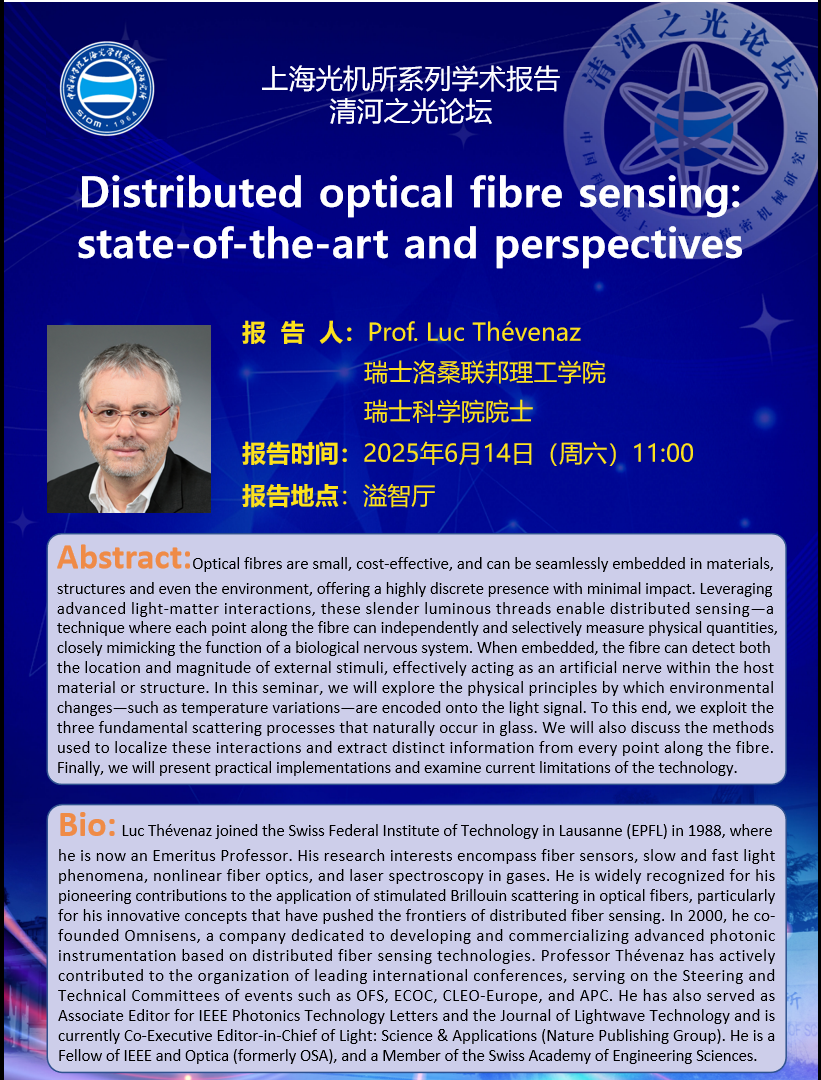 |
报告人: |
Prof. Luc Thévenaz |
| 报告题目: |
Distributed optical fibre sensing: state-of-the-art and perspectives |
| 报告时间: |
2025年6月14日(周六)11:00 |
| 报告地点: |
溢智厅 |
|
|
| 报告人简介 |
|
Luc Thévenaz joined the Swiss Federal Institute of Technology in Lausanne (EPFL) in 1988, where he is now an Emeritus Professor. His research interests encompass fiber sensors, slow and fast light phenomena, nonlinear fiber optics, and laser spectroscopy in gases. He is widely recognized for his pioneering contributions to the application of stimulated Brillouin scattering in optical fibers, particularly for his innovative concepts that have pushed the frontiers of distributed fiber sensing. In 2000, he co-founded Omnisens, a company dedicated to developing and commercializing advanced photonic instrumentation based on distributed fiber sensing technologies. Professor Thévenaz has actively contributed to the organization of leading international conferences, serving on the Steering and Technical Committees of events such as OFS, ECOC, CLEO-Europe, and APC. He has also served as Associate Editor for IEEE Photonics Technology Letters and the Journal of Lightwave Technology and is currently Co-Executive Editor-in-Chief of Light: Science & Applications (Nature Publishing Group). He is a Fellow of IEEE and Optica (formerly OSA), and a Member of the Swiss Academy of Engineering Sciences. |
| 报告简介 |
|
Optical fibres are small, cost-effective, and can be seamlessly embedded in materials, structures and even the environment, offering a highly discrete presence with minimal impact. Leveraging advanced light-matter interactions, these slender luminous threads enable distributed sensing—a technique where each point along the fibre can independently and selectively measure physical quantities, closely mimicking the function of a biological nervous system. When embedded, the fibre can detect both the location and magnitude of external stimuli, effectively acting as an artificial nerve within the host material or structure. In this seminar, we will explore the physical principles by which environmental changes—such as temperature variations—are encoded onto the light signal. To this end, we exploit the three fundamental scattering processes that naturally occur in glass. We will also discuss the methods used to localize these interactions and extract distinct information from every point along the fibre. Finally, we will present practical implementations and examine current limitations of the technology. |
| 本期论坛海报 |
|

| |












